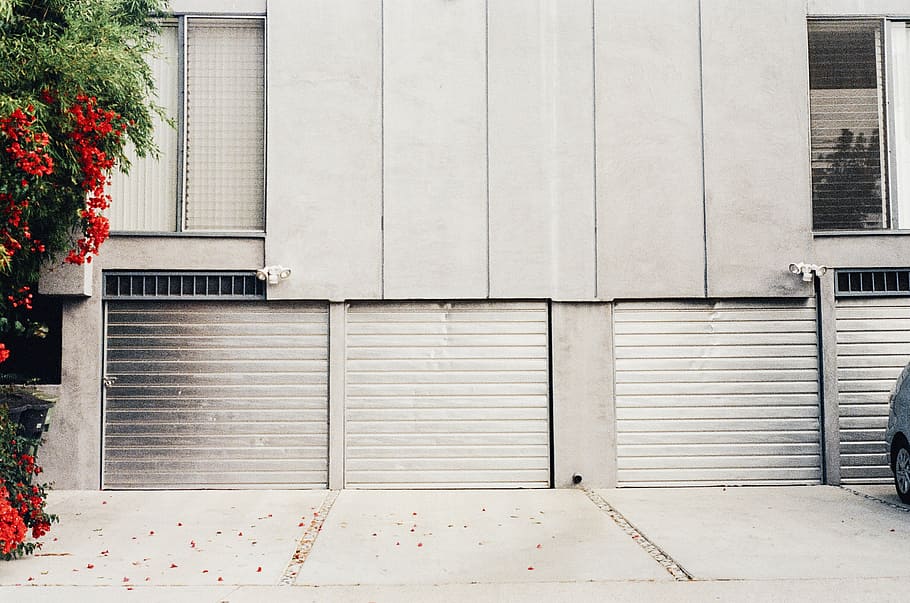Shutter
[edit] Introduction
As a verb, the term ‘to shutter’ is associated with pouring concrete into a form or mould so it stays in place until it hardens. This is sometimes referred to as shuttering. Shuttering is perhaps the most common type of formwork and is normally constructed on site using timber and plywood. For more information see: Formwork.
Shuttering (as a verb) can also mean to close permanently or go out of business (as in the expression, ‘to shutter a business’).
As a noun, a shutter - in the most general terms - is an object that secures an opening and restricts light from coming into a space. Typically this is a manually operated panel, cover or other type of screen that blocks a window or door. A shutter can also be a mechanical device (particularly in photography).
[edit] Types of shutters
There are several types of shutters.
Window shutters are generally pairs of hinged panels fixed inside or outside a window that can be closed for security, or privacy. Window shutters are also designed to keep out the light and to prevent the passage of heat. Window shutters can be solid panels made from almost any material that can be fitted within a frame. They can be horizontally or vertically louvred and fashioned so they are fixed or operable.
Roller shutters are another type of window shutter that can also be used on doors or windows. These can be referred to as security shutters, coiling doors, roller doors or sectional overhead doors. These devices are made up of numerous horizontal strips that are connected with hinges. Roller shutters can be motorised or operated by hand.
See exterior shutters.
In terms of life safety, a fire shutter can be part of a fire protection system. A fire shutter is a type of roller shutter designed to restrict the spread of smoke and fire. These shutters can close automatically if a fire is detected.
For more information, see Fire doors in buildings.
NB Short Guide, Scottish traditional shopfronts, published, on 18 April 2017 by Historic Environment Scotland, defines shutters as: ‘A security feature for the protection of goods and of valuable glass. Wooden boards were available from the mid-18th century. They were lifted in and out of the shop and placed into special grooves or slots in the windows and fixed with an iron shutter bar. Roller shutters were introduced in the early 19th century but wooden lifting shutters remained popular into the early 20th century. Metal roller shutters are now popular with shopkeepers as these may be perceived as offering a higher degree of security but can be visually intrusive, particularly for traditional shopfronts.’
[edit] Related articles on Designing Buildings
Featured articles and news
RTPI leader to become new CIOB Chief Executive Officer
Dr Victoria Hills MRTPI, FICE to take over after Caroline Gumble’s departure.
Social and affordable housing, a long term plan for delivery
The “Delivering a Decade of Renewal for Social and Affordable Housing” strategy sets out future path.
A change to adoptive architecture
Effects of global weather warming on architectural detailing, material choice and human interaction.
The proposed publicly owned and backed subsidiary of Homes England, to facilitate new homes.
How big is the problem and what can we do to mitigate the effects?
Overheating guidance and tools for building designers
A number of cool guides to help with the heat.
The UK's Modern Industrial Strategy: A 10 year plan
Previous consultation criticism, current key elements and general support with some persisting reservations.
Building Safety Regulator reforms
New roles, new staff and a new fast track service pave the way for a single construction regulator.
Architectural Technologist CPDs and Communications
CIAT CPD… and how you can do it!
Cooling centres and cool spaces
Managing extreme heat in cities by directing the public to places for heat stress relief and water sources.
Winter gardens: A brief history and warm variations
Extending the season with glass in different forms and terms.
Restoring Great Yarmouth's Winter Gardens
Transforming one of the least sustainable constructions imaginable.
Construction Skills Mission Board launch sector drive
Newly formed government and industry collaboration set strategy for recruiting an additional 100,000 construction workers a year.
New Architects Code comes into effect in September 2025
ARB Architects Code of Conduct and Practice available with ongoing consultation regarding guidance.
Welsh Skills Body (Medr) launches ambitious plan
The new skills body brings together funding and regulation of tertiary education and research for the devolved nation.
Paul Gandy FCIOB announced as next CIOB President
Former Tilbury Douglas CEO takes helm.
UK Infrastructure: A 10 Year Strategy. In brief with reactions
With the National Infrastructure and Service Transformation Authority (NISTA).























